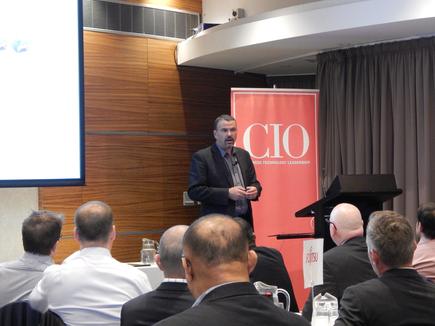CIO100 2018 #31-100: Ed Overy, KiwiRail

“If you look at where IT organisations have failed or have succeeded, you will see the same characteristics,” says Ed Overy, chief information officer at KiwiRail.
“It is how they engage with and get close to the the customer, whether these are internal or external customers.
“They fail the moment there is a separation between IT and the internal or external customer, and IT becomes insular. Conversely, if IT can connect with the customer, that is where they succeed.”
Thus, when Overy joined KiwiRail four years ago, one of his priorities was to ensure this gap will not exist between IT and the other business units.
“Recently, we ran a session with several representatives from various parts of the business - engineering, operations and finance - a workshop on what it means to be a business sponsor of a project.”
For Overy, this is a flow on effect of IT working hand in hand with the business units, as it is now seen as a model for delivering projects outside the traditional technology domain.
Another example of this close IT collaboration with the business units is their delivery of a rostering system from Quintiq.
This is one of our most successful projects over the past year, he says.
Overy explains KiwiRail has a large workforce doing lots of different activities but the work schedule was rostered in the traditional way, and done very manually. This means lots of Excel spreadsheets and emailing of documents.
There was not a lot of visibility of the rostering, and nothing in the way of optimising those rosters, he says.
He says the IT team deliberately chose an Agile methodology for the deployment of the system.
“A dedicated joint IT/business team was established and through a series of ‘sprints’, deployed the system for our customer services centre, which is in our headquarters. We have now rolled it out to our container terminal sites,” says Overy.
“We will continue to roll out the rostering system across other areas of the organisation. We have locomotives, terminals, yard depots and networks, and they all have different rostering environments.”
He says another recent project, meanwhile, had IT working with other divisions to move documents to mobile devices.
KiwiRail had very paper-driven manual processes, says Overy. “We have track inspection forms, maintenance forms for our locomotives, etc.
“So we adopted a technology platform to take some of these forms and make them available on devices like iPads.”
He says the project led KiwiRail to also look at some of its own core processes. “We brought technology to bear and question what data elements we need in the field.
“For instance, we took the track inspection form and put it in mobile. We asked, ‘well, actually is that what you want to do? What is the process of track inspection?’”
“It is innovation for the business because this new technology is challenging the way we do things,” he says.
Gaining value from disruptive tech
On harnessing emerging and disruptive technologies, Overy says KiwiRail is progressing significantly on a programme for the Internet of Things.
“We have got 200 mainline locomotives and they are expensive assets. We have four-and-a-half thousand train wagons. We want to know their locations and their conditions. You can do that through IoT.”
For the locomotives, IoT will help us move from planned preventive maintenance to condition-based maintenance, he says.
Overy says KiwiRail has a team dong study tours and talking to a lot of providers in Asia, Europe and Australia. Last year, he visited TasRail (Tasmania) and Aurizon (Queensland), Queensland Rail, Pacific National Rail and Sydney Trains all of whom have programmes progressing condition based maintenance.
“Today, we are starting to develop digital strategies with our customers in logistics and supply chain. They told us ‘we want to improve information and data flows and KiwiRail needs to work with us to do it.’
“I have been talking to our customers directly and there is definitely the potential for KiwiRail to be a key part be the information backbone for the logistics and supply chain industry in New Zealand,” he points out.
“This is because we are in contact with all of the ports, with the big logistics providers and we see a lot of the freight movements.”
